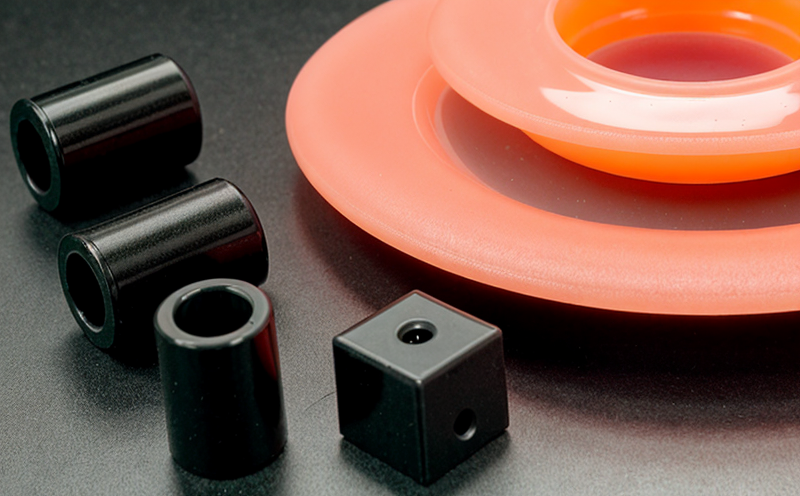ISO 180 Impact Strength Testing of Sports Plastic Equipment
The ISO 180 impact strength testing method is a critical standard used to evaluate the resistance of sports plastic equipment against impacts. This test assesses how well the materials in sports gear withstand sudden force, which is crucial for ensuring safety and performance during use. In this section, we will delve into the detailed procedure, significance, and real-world applications of ISO 180 impact strength testing.
The ISO 180 standard specifies a pendulum impact test that measures the energy absorbed by a specimen when it is struck by an impacting hammer. This method helps manufacturers understand how their products will perform under real-world conditions where sudden impacts are common, such as in skateboarding or football helmets. The test results provide valuable insights into the durability and safety of sports plastic equipment.
For accurate testing, specimens must be prepared according to the ISO 180 guidelines. This includes ensuring that the material thickness is consistent across all samples and that any necessary pre-treatment steps are completed before testing begins. The choice of specimen shape (e.g., notched or unnotched) will influence the outcome, so it's important to select the appropriate design for your specific application.
The test apparatus typically consists of a pendulum impact machine capable of delivering controlled impacts at specified velocities and angles. Once the sample is loaded into the testing fixture, the machine swings the pendulum arm down onto the specimen. After each strike, the energy absorbed by the material determines the impact strength value.
Understanding the acceptance criteria for ISO 180 tests is essential for interpreting results correctly. According to ISO 180, a minimum impact strength must be achieved for the sample to pass the test. This threshold varies depending on the type of plastic and its intended use in sports equipment. For instance, materials used in high-impact areas like skateboarding helmets may have stricter requirements compared to those used in less critical parts.
Incorporating ISO 180 impact strength testing into your product development process ensures compliance with international standards while also improving overall quality and safety. By conducting these tests early in the design phase, manufacturers can identify potential weaknesses before they become costly issues during production or after-market recalls.
Real-world examples of sports equipment that benefit from ISO 180 impact strength testing include skateboards, football helmets, inline skates, and bicycle components. These items all rely on robust plastic materials to protect users from injury due to falls or collisions. Ensuring these products meet the necessary standards helps maintain consumer trust and satisfaction.
Industry Applications
- Sports helmets (football, hockey)
- Skateboards and inline skates
- Bicycle components including frames and wheels
- Recreational vehicles like scooters and mobility aids
The data generated through ISO 180 testing can be used to enhance product design by identifying areas where improvements are needed. For example, if a particular model of skateboard shows lower impact strength than competitors, the manufacturer might consider switching to a different polymer blend or adding reinforcement layers.
Environmental and Sustainability Contributions
- Evaluating plastic materials for recyclability and reusability
- Determining how well plastics withstand environmental factors like UV exposure or temperature fluctuations
By using ISO 180 impact strength testing, companies contribute to more sustainable practices by selecting durable yet environmentally friendly plastics. This approach helps reduce waste and promotes the use of resources that last longer over time.





